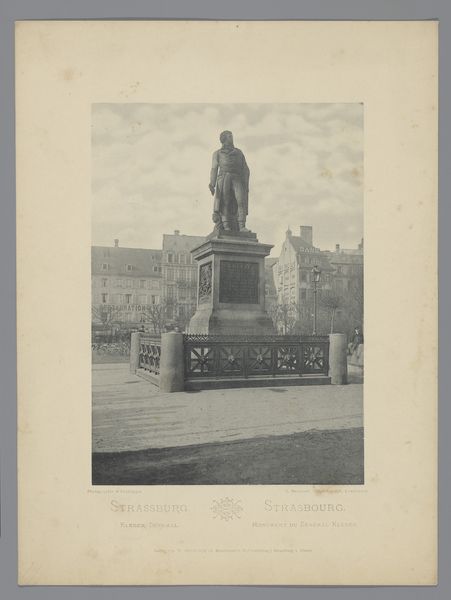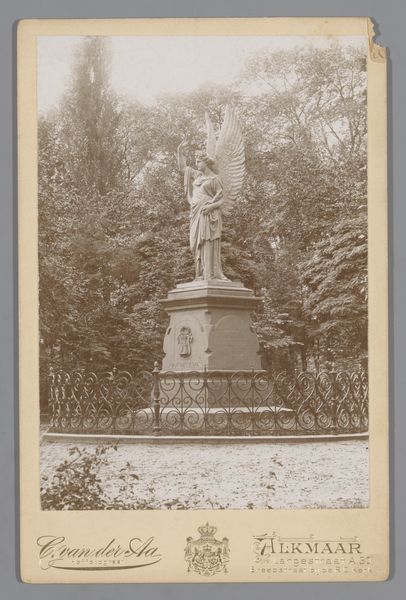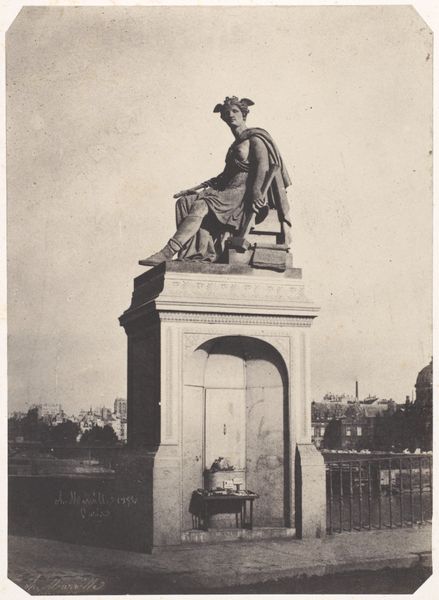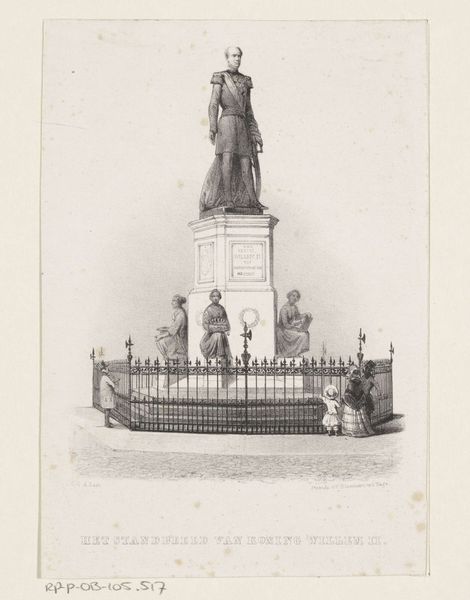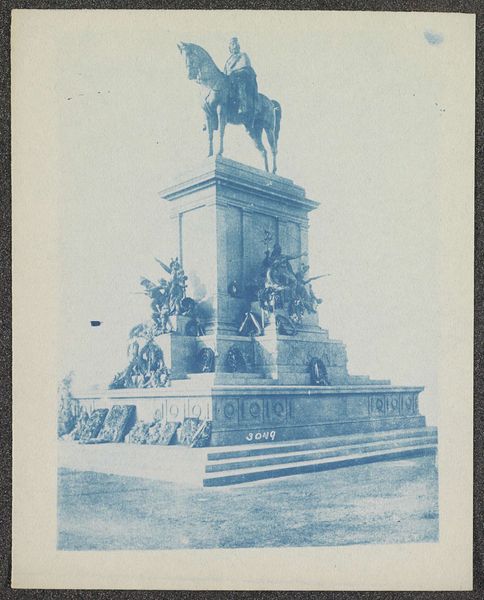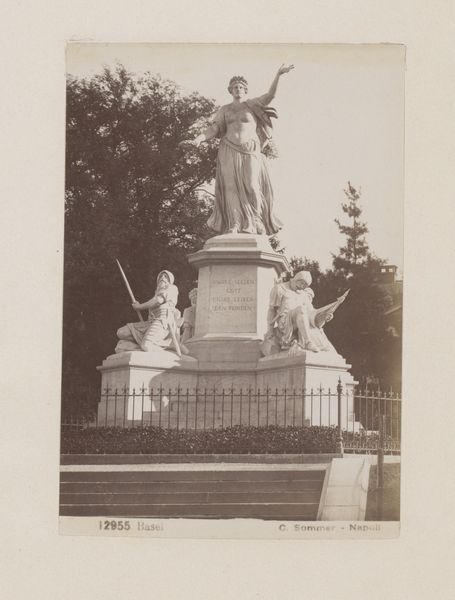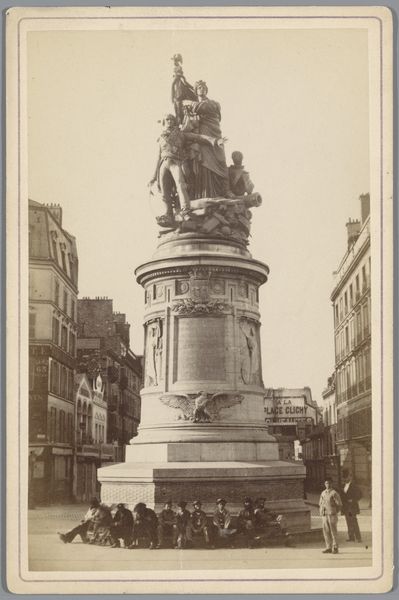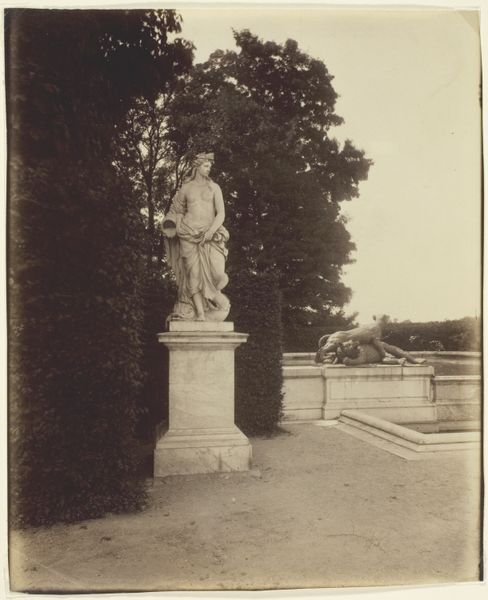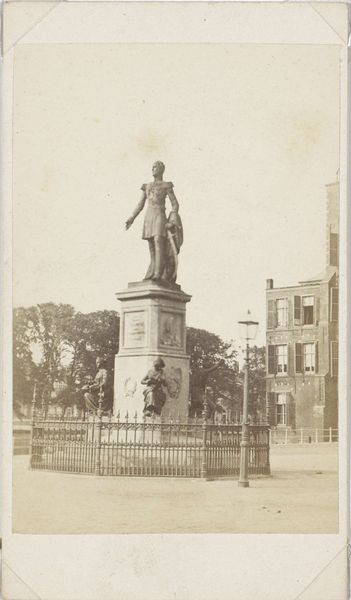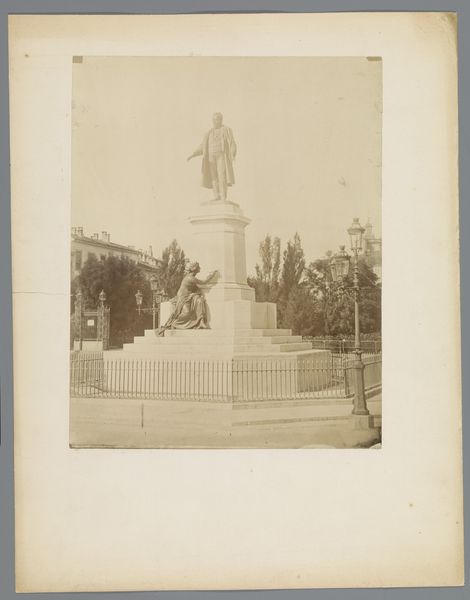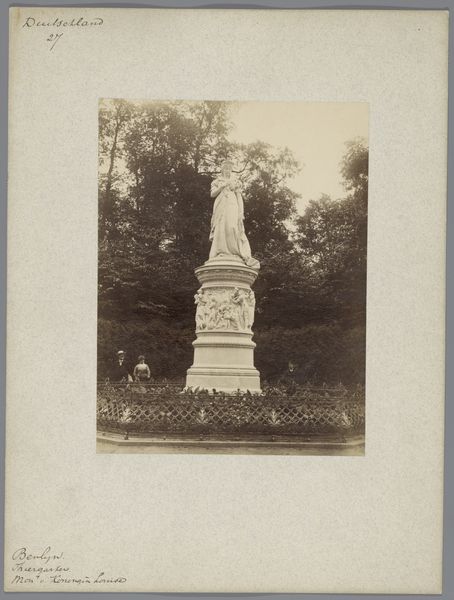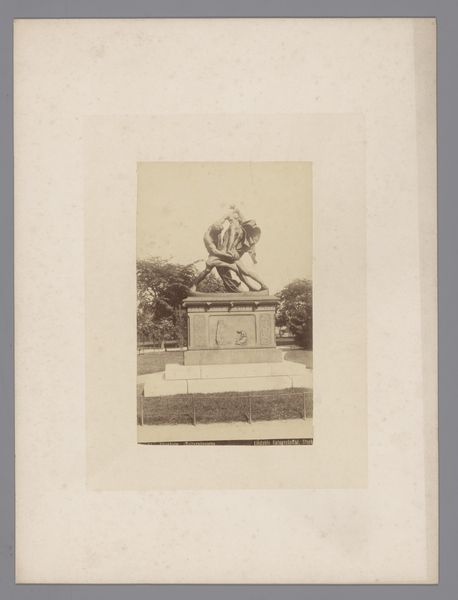![[Civil War View] by Thomas C. Roche](/_next/image?url=https%3A%2F%2Fd2w8kbdekdi1gv.cloudfront.net%2FeyJidWNrZXQiOiAiYXJ0ZXJhLWltYWdlcy1idWNrZXQiLCAia2V5IjogImFydHdvcmtzLzMwZjc4NzAzLTE0MDItNDU4MC04ZDZlLTY2NjYxN2ExMWViNy8zMGY3ODcwMy0xNDAyLTQ1ODAtOGQ2ZS02NjY2MTdhMTFlYjdfZnVsbC5qcGciLCAiZWRpdHMiOiB7InJlc2l6ZSI6IHsid2lkdGgiOiAxOTIwLCAiaGVpZ2h0IjogMTkyMCwgImZpdCI6ICJpbnNpZGUifX19&w=3840&q=75)
Copyright: Public Domain
Editor: Here we have "Civil War View," a gelatin silver print dating back to the 1860s by Thomas C. Roche, currently residing at the Metropolitan Museum of Art. It feels rather…stark. The dark iron fence in the foreground creates this barrier, leading the eye to a grand statue shrouded by somewhat blurred trees. How do you interpret this work formally? Curator: Indeed. Focus, if you will, on the contrasting textures evident in Roche's print. The rigid verticality of the iron fence presents a staccato rhythm. Juxtapose that against the softness of the foliage and the relative solidity of the statue. Editor: The statue definitely commands attention, sitting centrally. Does its position create a focal point, directing the viewer’s gaze despite the barrier in the foreground? Curator: Precisely. Observe how the photographer used linear perspective. The converging lines lead us inexorably towards that central figure. What narrative does this structural approach imply, given the likely historical context? Consider how it communicates a deliberate viewing strategy by directing, then holding the gaze on this sculpture. Editor: Maybe a sense of distance and reverence? The photograph is not just presenting the statue, it’s controlling how we see it. Curator: Quite astute. Now consider the monochromatic palette. How does the reduction of colour emphasize tonal contrasts and, in doing so, shape our perception? Is that strategic, or merely the product of its time? Editor: The gray scale definitely forces a deeper reading of the forms and light—perhaps pushing the viewer to analyze the composition rather than being swept away by color. I appreciate how analyzing these choices affects the message. Curator: Exactly. The absence of colour highlights essential visual relationships. Through considered arrangements, Roche subtly leads our thinking. What appears documentary, also dictates through artistic restraint and form.
Comments
No comments
Be the first to comment and join the conversation on the ultimate creative platform.
